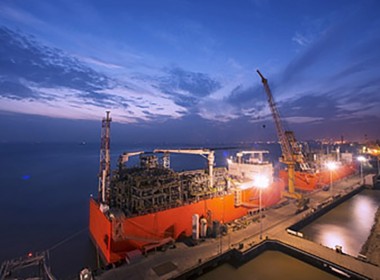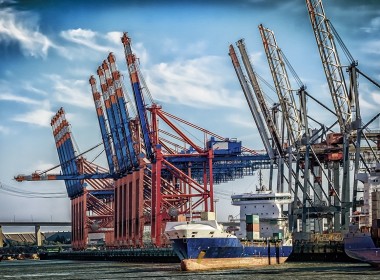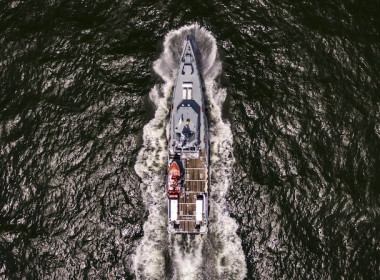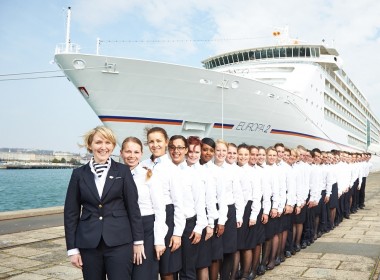COLUMN | Anxiety and the bunker barge [Grey Power]

We have a new decade, with the 21st century’s teenage years consigned to the history books and a new regime governing the supply and use of marine fuels.
It hasn’t exactly crept up on the industry: for months on end there have been warnings about the great leap into the low-sulphur future programmed for the dawn of a new decade. You could have gone blind reading all the advice and information circulating about what is really quite a drastic change in the fuel that people used to take very much for granted, with the new sulphur limit capped at 0.5 per cent from January 1.
So, everyone is completely clued up on the requirements of MARPOL Annex VI and the need to assure that the fuel burned aboard is fully compliant, if the ship is not fitted with a scrubber working at peak efficiency?
If that is the case, why are seafarers worried stiff about their liabilities and vulnerabilities, should the inspectors come calling and discover some deficiency in either the contents of the tanks, or the supporting paperwork? Are their fears entirely groundless?
Maybe the passage of time will prove that their concerns about heavy-handed implementation by shore side authorities have been exaggerated and the changeover will be smooth and largely incident-free.
After all, when the first low-sulphur zones appeared around the north European coasts, there were occasional reports of ships being penalised for ignoring the rules, but the problems tended to be mechanical, rather than regulatory ones.
“Something nasty being discovered in the bunker tanks”
But “Low-Sulphur 2020” is of a different order of magnitude and it would be unsurprising if some authorities themselves were to be interpreting the requirements in a singular or unfair fashion, that will leave those aboard ship treated as scapegoats.
As the regulations were framed, you sometimes had the impression that those doing the framing were rather remote from the real world of the vessel’s stop for bunkers and the relationships between everyone involved.
It might be unfair to those of huge respectability supplying marine fuels, but the words “trusted trader” don’t always come to mind when the supply of bunkers are being considered.
For decades, it seems, perhaps since the oil majors decided marine fuel supply was rather beneath them, we have been regularly reading about all sorts of frightful scandals involving something nasty being discovered in the bunker tanks.
Catalytic and metallic fines seem to be mostly featured, to wreck the innards of an engine, and few eyebrows seem to be raised when the analysts in the laboratory find that some bright sparks along the marine fuel supply chain have seized the opportunity to rid themselves of a tankful of some horrible chemicals, which they thought could be smoothly mixed into some marine fuel, without anyone being aware.
“It is not all peaches and cream in the world of international shipping”
There have been regular dire warnings, mostly from P&I clubs, about the need to sample anything taken on board, the need to verify the quantity and hints about some of the tricks clever chaps on bunker barges get up to.
We were warned about the risk of taking on aeriated fuel with the barge frothing up the oil to fool the metering, although quite how they managed to “aerate” something with the consistency of tarmacadam, I was never quite sure.
But the real worries of seafarers probably stem from well-publicised cases of ships’ officers facing criminal charges when there has been some tiny aberration in the permitted quantity of sulphur. The master of a cruise ship prosecuted in Marseilles, for instance.
Then there are the warnings about official-looking chaps in certain Black Sea ports who have been extorting money from those aboard ships under the threat of prosecution for “environmental crimes”. There are a lot of places that ships go to, where the rule of law is notional, to say the least and the opportunities to throw a bit of weight around over fuel issues when a ship is alongside will be a great temptation.
It is reasonable enough to assume that the liner companies which will have bunker supply contracts with the respectable majority of suppliers will have fewer problems in the next few months. But it is worth considering the position of those aboard chartered tonnage, with the charterer dictating where the fuel is to be stemmed and from whom (usually based on price), and then pointing out that the use of a fuel laboratory will be not be to their account.
And when the laboratory comes back stating that the fuel is non-compliant or incompatible with that already aboard, who will cope with the resultant rows, or in the worst case, the criminal charges levied against the ship’s master or chief engineer after the surprise visit of the inspector, in the midst of the furore?
People are urged to follow all the rules assiduously and in a reasonable world, it would be perfect advice. But it is not all peaches and cream in the world of international shipping and there will be some very unreasonable people around, both ashore in the respective inspectorates, and in shipping company and charterers’ offices.
It will be the poor old seafarers who will be the vulnerable ones and it is they who have to march into this new era with our fingers crossed for them, hoping that their scrubbers scrub cleanly and their bunkers assume the purity of extra-virgin olive oil. And that, in short, is why they are worried.







